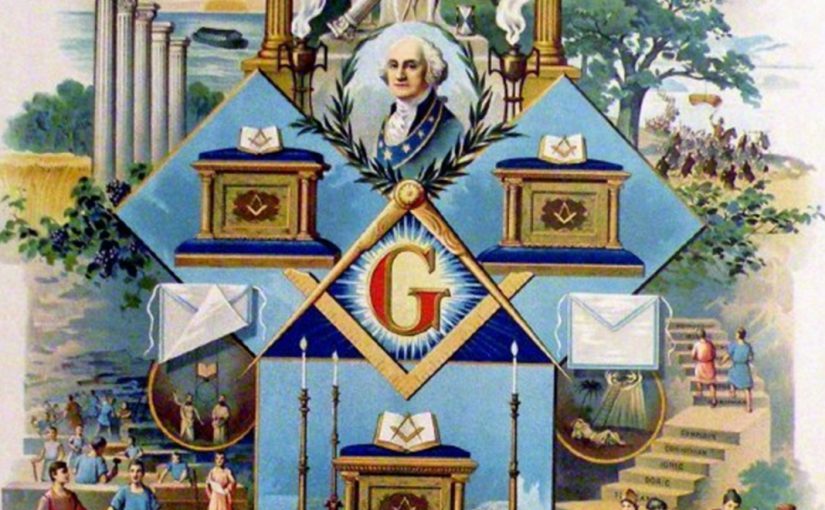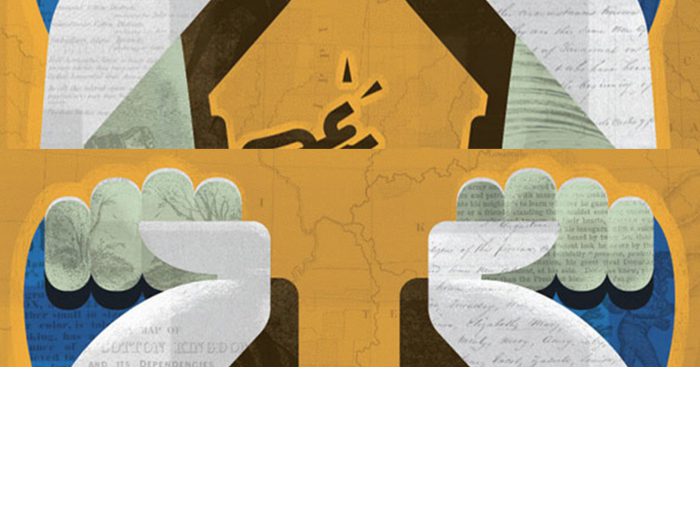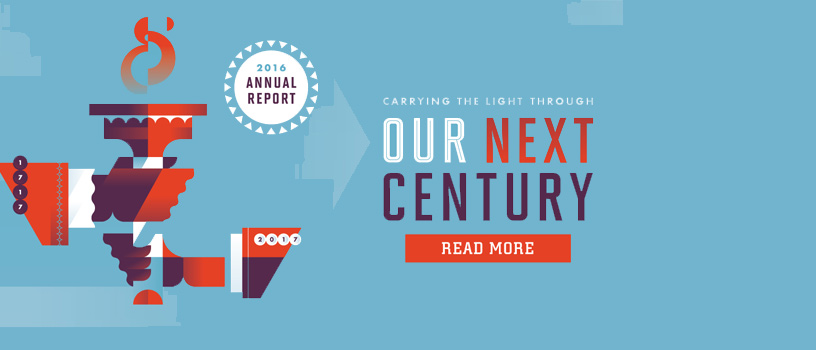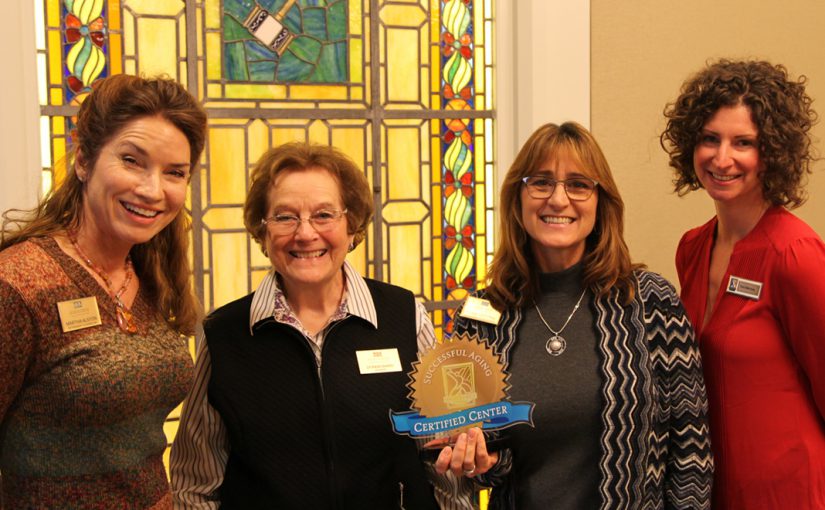Freemasons have been active in California even since before it was officially a state, and many notable artifacts from every age are available online to interested Masonic scholars. Kick off a research project or ignite your inner history buff by exploring the collections of the Henry Wilson Coil Library and Museum of Freemasonry.
Month: February 2017
Freemasonry Set Free
DECIPHERING THE CONNECTIONS BETWEEN PRINCE HALL MASONRY AND THE UNDERGROUND RAILROAD.
By Tyler Ash
For nearly 200 years, the Underground Railroad has been an elusive, almost mythical aspect of American history, shaping the way we view the cultural and sociopolitical landscapes of the American psyche during the 1800s.
A key question continues to elude historians: How did such a large network of people help nearly 100,000 slaves gain freedom while still maintaining a secretive, almost clandestine, status? One fascinating insight may be found by studying some of the leading Prince Hall Masons in Boston during the pre-Civil War period through the post-Reconstruction era. As the sediment of time is gradually lifted from the artifacts of historical truth, researchers are rediscovering fundamental relationships between key conductors of the Underground Railroad and leaders of Prince Hall Freemasonry.
One of those researchers is James R. Morgan III, a past master of Corinthian Lodge No. 18 and the worshipful associate grand historian and archivist of the Most Worshipful Prince Hall Grand Lodge of the District of Columbia. Morgan, who was also recently a keynote speaker at the 16th Annual California Masonic Symposium in June of 2016, is a scholar of African-American history and a member of the Phylaxis Society, the only independent research organization dedicated to the study of African-American Freemasonry.
“One of the formulating hands of Prince Hall Masonry was the trans-Atlantic slave trade itself and the effort of people of African descent to find their freedom and gain liberty,” Morgan says. “It was in the best interest of Prince Hall Masons to aid that struggle.” The relationship between Prince Hall Masonry and the Underground Railroad was symbiotic, says Morgan. A number of the earliest Prince Hall leaders were once enslaved themselves. “Many of these men were considered ‘runaways’ even as they were advancing in Masonry,” Morgan says. “They were aware that their freedom could be revoked at any time.”
FROM SLAVES TO LIBERATORS
Lewis Hayden is one example. Born a slave in Kentucky in 1811, he taught himself to read. In 1844, he and his enslaved family were aided by white abolitionists Calvin Fairbank, a Methodist minister, and Delia Webster, a teacher from Vermont, along the Underground Railroad from Lexington, Kentucky to Ripley, Ohio. Assisted by additional abolitionists, the Hayden family continued north to Canada, where thanks to the Canadian Act Against Slavery of 1793, slavery was outlawed. After attaining their freedom, the Haydens moved to Boston – the center of the abolitionist movement at the time, as well as one of the most active communities of free African-Americans in the country. Boston was also where Prince Hall, the individual, founded African Lodge No. 1 (now No. 459) with 14 other African-American Freemasons in 1782.
Hayden soon became a key figure in Bostonian society and the Underground Railroad. He was extremely passionate about the abolitionist movement, even willing to risk his life in support of the cause. He sheltered more than 100 fugitive slaves at his Boston residence and clothing store, which became known as “the temple of refuge.” John J. Smith, a freeborn African-American from Virginia, played another vital role. After testing his luck in the gold fields of California, Smith moved to Boston between 1849 and 1850, and became a barber. His shop soon served as a hotbed for abolitionist activity and as another key stopping point for runaway slaves. Like Hayden, he was a member of the first Prince Hall lodge, African Lodge No. 1.
As Prince Hall lodges became more established, the education they provided for their members offered a launchpad to higher social status, despite the prejudicial climate of American society in those days. Hayden and his Prince Hall contemporaries harnessed this newfound power to advocate for social justice and lift up brothers who tried to follow in their footsteps. In 1843, George Latimer, a fugitive slave from Virginia, escaped to Boston through the Underground Railroad but was captured upon his arrival and sent to state prison. Prominent Masons, including Hayden and Smith, began a blitzkrieg in the media. A group of abolitionists formed the “Latimer Committee,” issuing several lengthy petitions to the Massachusetts State Assembly. This resulted in the Personal Liberty Act, or the “Latimer Law,” which prevented officials from aiding slave catchers by detaining suspected fugitive slaves in state facilities.
After the ruling, Latimer was viewed as a hero in the abolitionist community and his freedom was purchased for $400. Propelled by immense gratitude, he became a Prince Hall Mason himself and began aiding Underground Railroad efforts. One well-publicized example of Latimer’s contributions is the freeing of a fugitive slave named Shadrach Minkins. In a daring rescue, Hayden, Smith, Latimer, and Edward G. Walker – all Prince Hall Masons within the Boston Vigilance Committee – forcibly retrieved Minkins from courthouse officials after he was arrested under the Fugitive Slave Act of 1850. Through the Underground Railroad, they ensured his safety to Canada.
“The Latimer and Minkins rescues are perfect examples of symbiosis between Prince Hall Masonry and the Underground Railroad,” Morgan says. “These men fulfilled a unique social role.”
Without Prince Hall Masonry, there would not have been an Underground Railroad as it is understood today.
LAUNCHING A LEGACY
Boston’s Prince Hall leaders continued to have lasting and widespread effects both in Masonry and in American politics – accomplishments that were, as Morgan notes, remarkable for their time. After founding numerous Prince Hall chapters, Hayden served twice as grand master of the Most Worshipful Prince Hall Grand Lodge of Massachusetts, from 1852 to 1855 and 1857 to 1858. After the Civil War, he published several works on Freemasonry in the African-American community and traveled throughout the Reconstruction-era South, working to create new Prince Hall lodges and to support those that had been newly established.
Smith went on to serve as a state legislator, a recruiter for African-American segregated regiments and cavalries during the Civil War, and as grand master of the Most Worshipful Prince Hall Grand Lodge of Massachusetts in 1859, the year after Hayden was reelected. Today, John J. Smith Lodge No. 14 in Massachusetts bears his name.
Walker exemplifies the value of Prince Hall Masonry to African-American men of his generation. He was one of the first African-American men to pass the Massachusetts bar exam, and later became one of the first African-Americans elected to the Massachusetts State Legislature. In 1896, he was nominated as a U.S. presidential candidate by the Negro Party.
The connections between Prince Hall Masonry, the Underground Railroad, and the rise in African-American social status continues to thrill contemporary historians. Secrets of this fascinating era are still being unearthed; yet, it is clear that without Prince Hall Masonry, there would not have been an Underground Railroad as it is understood today, and that other political and social achievements would have likely been delayed. “These men put their lives on the line to stand up for what they believed in,” says Morgan. “It was a Masonic thing to do.” And, as contemporary scholars may attest, early Prince Hall Masons’ devotion to championing and living the Masonic ideals of freedom and equality profoundly impacted the course of our nation’s history.
Masons of California Annual Report
In 2016, California Masons led the way on many different fronts for our fraternity — and now we are looking forward to our future. Read the 2016 Annual Report to learn more about statewide initiatives that will come to fruition in the coming year, and discover how you can apply the lessons and successes of the past year to make this Masonic year even more successful.
Explore the Masons of California 2016 Annual Report
Executive Message
Grand Master John R. Heisner reflects on our tricentennial Masonic anniversary (1717-2017), and Freemasonry’s important role in leading mankind towards a future where all people are treated with kindness and respect.
Solidarity Guides Us
As the light of California Masonry is passed on from brother to brother, Grand Secretary Allan L. Casalou believes that Masonic unity will be the fraternity’s guiding force – and instrumental to its success.
Lighting Our Next Century
From members who are setting the bar for excellence to communications advancements, exciting accomplishments at Acacia Creek, and brand-new lodges throughout the state, the future is bright for California Masonry.
Making an Extraordinary Impact
Read about the winner of the Mason of the Year and Builder’s Award, and celebrate brothers who received Hiram Awards in recognition of their dedication and leadership to their lodges and communities.
Two Visions, One Fraternity
Benicia Lodge, U.D. and Carquinez Lodge, U.D. are building a promising future at California’s oldest – and newly revitalized – Masonic hall.
Celebrating Acacia Creek’s Award-Winning Year
Now six years young, Acacia Creek is enjoying a prestigious nationwide distinction, 100 percent occupancy, a vivacious community culture, and more!
Inspired by Masonic Ritual
Bro. Edwin Senga, a winner of the 2016 Individual Ritual Awards, shares how the Masonic ritual has inspired his life and craft.
Sharing the Light of Brotherly Love and Knowledge
Learn how this year’s communications advancements mark an increased enthusiasm for a vibrant worldwide brotherhood.
Why We Give
Behind every gift to our Annual Fund, there is a story of brotherhood, of generosity, and of the desire to make a lasting impact; to leave the world better than we found it.
Carrying the Torch of Generosity
California Masonic Foundation President Douglas D. Ismail explains why supporting California Masonic charities is personally meaningful to him.
The Right Thing to Do
Bro. Edward Mackerley, a 54-year Mason, shares how his small-town upbringing has guided his life and charitable perspective.
The Dignity of Service
Major Thomas Spencer has served the United States Army throughout the world – and his fraternity has given him an opportunity to make meaningful connections.
Everyone Is on the Level
Past Master D. Adam Karim shares how living a charitable life and being a lodge leader have gone hand in hand for him. Plus, help celebrate lodges with 100% officer giving to the Annual Fund!
Making a Lasting Impact
Thanks to generous gifts from brothers and friends, Masonic family members and communities can count on California Masons for greatly needed relief. Learn how your gifts are bettering lives and society – from aiding student scholars and struggling youth to advancing care at the Masonic Homes.
Investing in Lupe
Recent college graduate Lupe Esquivel used her Investment in Success scholarship as a springboard for reaching her educational dreams.
Giving Back to Nick
DeMolay youth leader Nick Chan is a grateful recipient of one of the fraternity’s new Masonic Youth Leadership Scholarships.
LxWeek: The Future of Leadership
Last summer, Grand Lodge partnered with DeMolay to produce a new annual event providing valuable real-life professional and leadership skills to Masonic youth leaders.
Offering a Brighter Future
In its eighth season, Masons4Mitts brought 7,880 high quality baseball mitts to children in need – and received a letter from baseball great and fellow Mason Willie Mays!
Back Where It All Began
The Masonic Center for Youth and Families is bringing children’s relief back to Covina, where a new partnership will support children who are victims of abuse.
Envisioning Our Future
Grand Treasurer Arthur L. Salazar Jr. considers how philanthropy fits into the context of the fraternity’s 300th anniversary.
Masonic Homes Roadmap
The Masonic Homes is achieving a variety of milestones to improve access and quality of life on its residential campuses.
Honor Roll of Donors
Generous donors have aided and sustained the most vulnerable among us through their crucial gifts to California Masonic charities.
California Freemason App: Need on-the-go access for your mobile device? Download the free California Freemason app, for iPad and iPhone; Android devices; or Kindle Fire. Continue reading Masons of California Annual Report
Acacia Creek Receives National Distinction
At Acacia Creek’s founding, its board members set out to create a different kind of retirement community: One that would unite Masons and non-Masons alike in a shared culture of respect, community, and enthusiasm for life. One where the desire to “age successfully” — to establish continued growth and learning as an integral part of the aging process — would be a distinguishing factor.
Now, six years young, Union City, California’s best-kept secret is out. The nonprofit continuing care retirement community (CCRC) has achieved an unprecedented victory: Masterpiece Living designated Acacia Creek as a “Certified Center for Successful Aging.”
This prestigious distinction, which has only been awarded to 16 other CCRCs in the United States, recognizes “organizations that have set themselves apart from all others by implementing the best successful aging practices that promote resilience and benefit both members and team members.”
The criteria is partially based on qualifications determined in a landmark 10-year study by the MacArthur Foundation, which revealed that a majority of physical and mental again is determined by lifestyle. Acacia Creek’s application was unique in that it not only met but exceeded Masterpiece Living’s gold-caliber standards. Very few communities have ever scored above 90 on the evaluation; Acacia Creek’s score was 95, the highest to date.
“This achievement reflects the vitality and engagement that is the culture of Acacia Creek,” says Acacia Creek President Chuck Major. “It is the result of the partnership between residents and team members in creating a community where all residents age happily and successfully.”
Learn more about Acacia Creek’s culture of community and successful aging at acaciacreek.org.
Photo (from left): Acacia Creek Retirement Counselor Martha Crawford, Resident Donna Baird, Successful Aging Coach Penny Vittoria, with Masterpiece Living Partnership Specialist Cere Reine Meintzer



